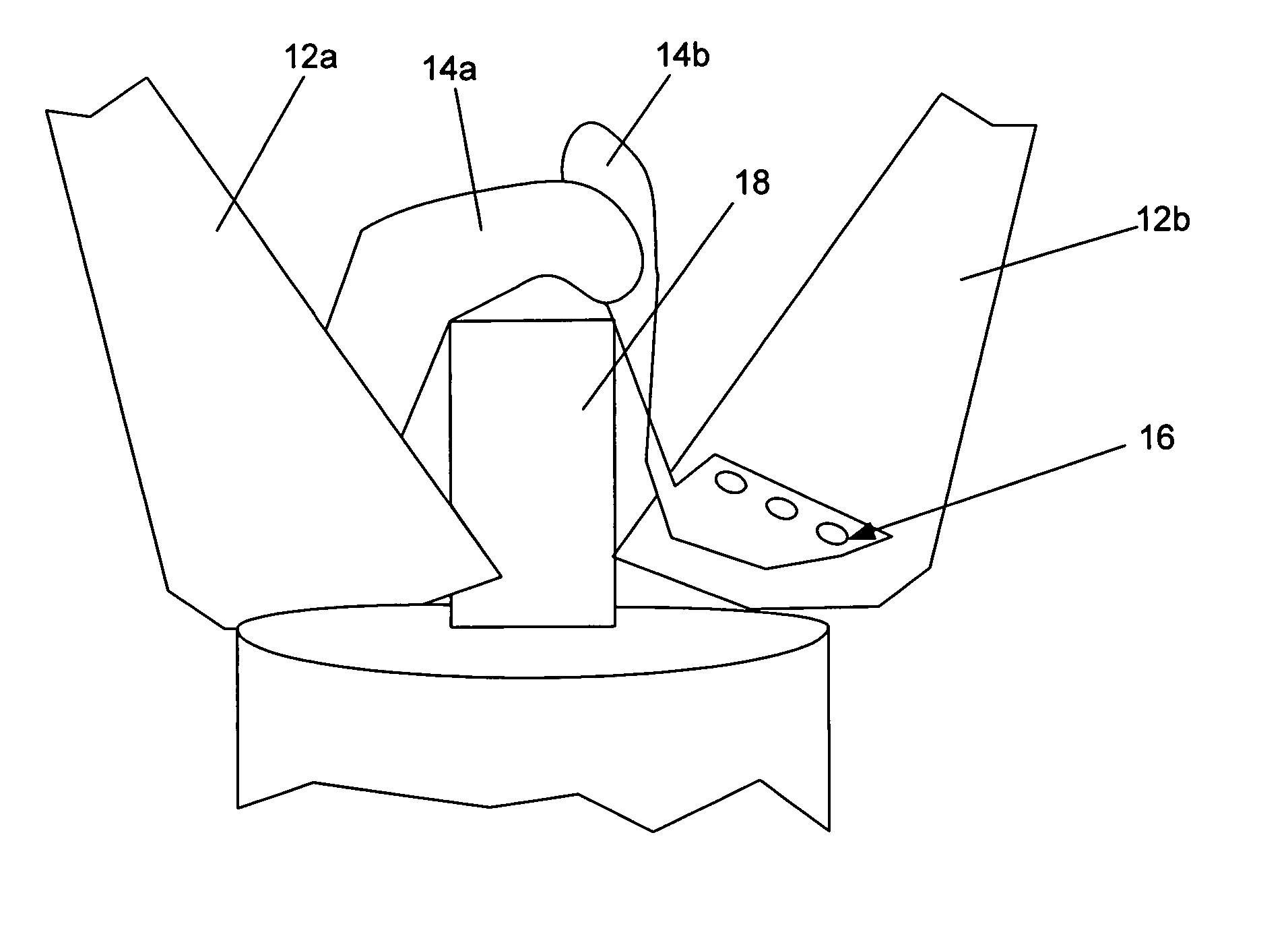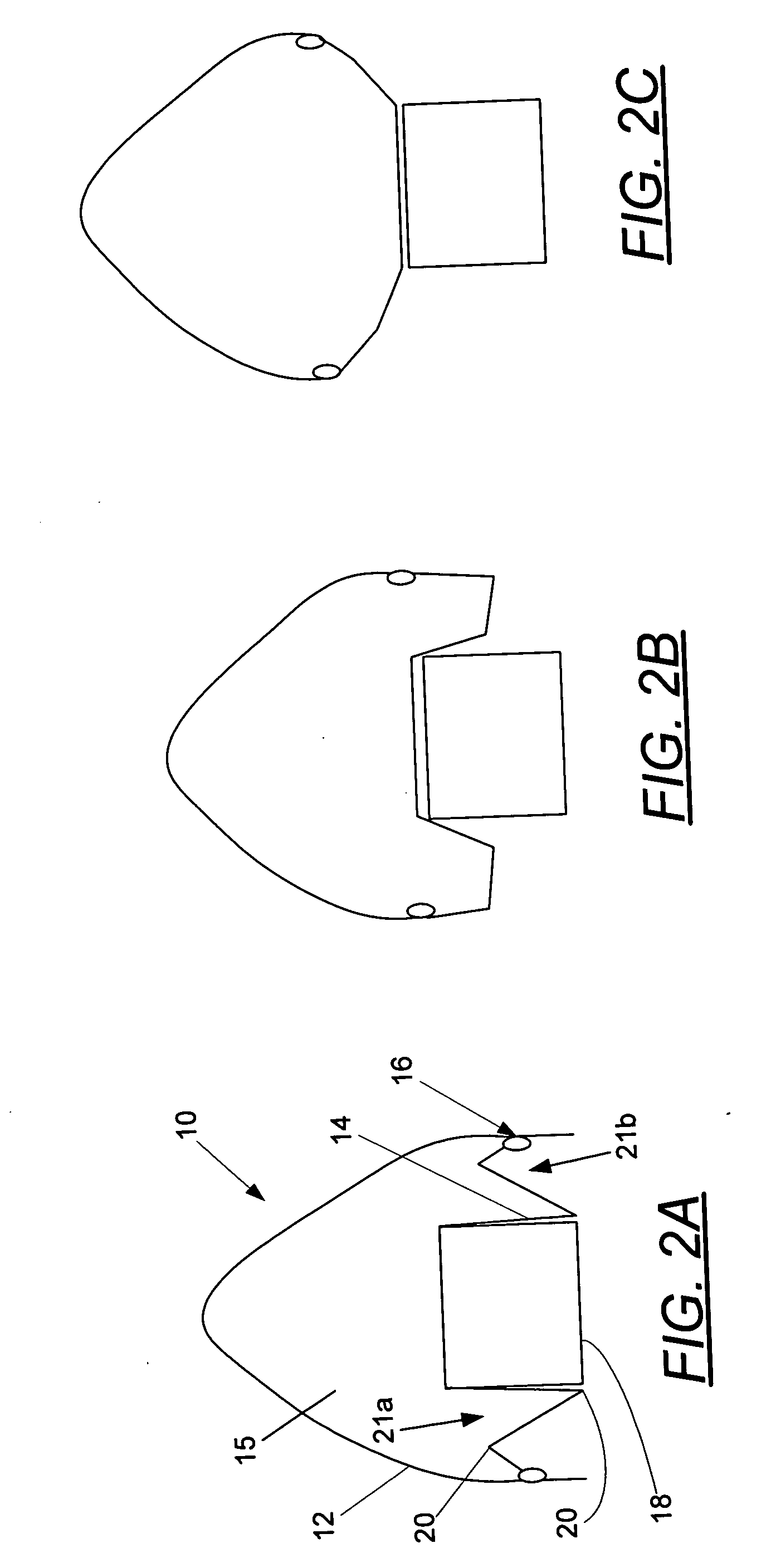Protective shield assembly for space optics and associated methods
a shield and optics technology, applied in the direction of cosmonautic thermal protection, transportation and packaging, cosmonautic vehicles, etc., can solve the problems of increasing the temperature that re-radiates to the optical surface and electronic assemblies, unable to provide heat protection, and freeing particulate contamination from the interior of the interceptor
- Summary
- Abstract
- Description
- Claims
- Application Information
AI Technical Summary
Benefits of technology
Problems solved by technology
Method used
Image
Examples
Embodiment Construction
[0027] The present invention now will be described more fully hereinafter with reference to the accompanying drawings, in which some, but not all embodiments of the invention are shown. Indeed, this invention may be embodied in many different forms and should not be construed as limited to the embodiments set forth herein; rather, these embodiments are provided so that this disclosure will satisfy applicable legal requirements. Like numbers refer to like elements throughout.
[0028] Referring now to the drawings and, in particular to FIG. 1 there is shown a protective shield assembly 10. The protective shield assembly 10 generally includes a shroud 12 and a flexible sheet of material 14 attached to an interior surface of the shroud. In general, the protective shield assembly 10 is employed to protect launch vehicle components, such as an optical system, that are disposed within the launch vehicle but later exposed when the assembly is deployed and removed from the launch vehicle. How...
PUM
| Property | Measurement | Unit |
|---|---|---|
| Flexibility | aaaaa | aaaaa |
| Circumference | aaaaa | aaaaa |
| Reflection | aaaaa | aaaaa |
Abstract
Description
Claims
Application Information
 Login to View More
Login to View More - R&D
- Intellectual Property
- Life Sciences
- Materials
- Tech Scout
- Unparalleled Data Quality
- Higher Quality Content
- 60% Fewer Hallucinations
Browse by: Latest US Patents, China's latest patents, Technical Efficacy Thesaurus, Application Domain, Technology Topic, Popular Technical Reports.
© 2025 PatSnap. All rights reserved.Legal|Privacy policy|Modern Slavery Act Transparency Statement|Sitemap|About US| Contact US: help@patsnap.com



